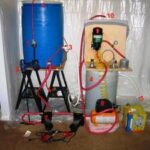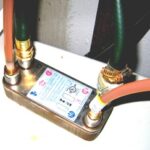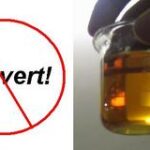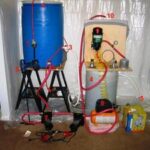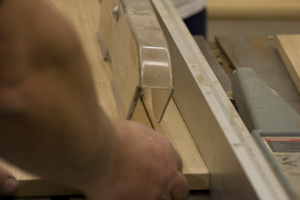Purpose
The purpose of this document is to provide a brief introduction on the benefits of applying of centrifuge technology to biodiesel production.
Biodiesel Production Demands The Optimization of Current Technologies
· Demand for biodiesel as a viable petrochemical alternative is growing exponentially.
· Traditional “garage-style” production methods such as settling tanks, filters and similar methods are slow, expensive, and cannot meet growing demand.
· A new method for biodiesel production must speed up production without diminishing product quality, while remaining cost-effective.
· This new method must not require a large-scale redesign of current facilities and must easily “plug-in” to existing systems.
·.
Batch Production
Current biodiesel production methods may incorporate one or several technologies in the production process. In the non-chemical treatment of raw biodiesel fluids, the use of filters and settling tanks is commonly accepted technology for storage and physical treatment of biodiesel fluids. While effective, filters and settling tanks entail labor intensive attendance, time, space, and operational costs, including the use of costly chemicals used to accelerate production. These are both the features and pitfalls inherent to a batch production mode of biodiesel manufacture.
Continuous Production
The introduction of centrifuge technology in biodiesel production enables a transformation from a batch production mode to a continuous production mode. Because centrifuges are a proven technology, they are a safe technological alternative to the optimization of biodiesel production. Depending upon the production methods used, biodiesel centrifuges may be used to enhance two clearly identifiable purposes in biodiesel production – as clarifier centrifuges and as separator centrifuges.
Clarifier Centrifuges
The term “clarification” is used to describe a separation of solids from a liquid. A clarifier is a centrifuge designed to discharge suspended solids from a liquid by using centrifugal force. In the early stages of settling tank production, screens and coarse filters generally serve the purpose of clarifying large suspended solids in raw biodiesel oil. In the latter part of the clarification process, settling tanks are used to finish the clarification. This process is slow and costly. A clarification centrifuge serves as a “miniature settling tank”, and accelerates the settling process by subjecting raw biodiesel oil to several thousand G forces. Essentially any suspended solids spin out from suspension, accumulate, and may be manually cleaned from the centrifuge or discharged through an automated ejection feature built into the machine. This is essentially a liquid-solid clarification process.
Separator Centrifuges
The term “separation” is used to describe the result of centrifugal force acting upon one liquid which separates into two or more liquids. In biodiesel production, the feed stock is first clarified in a clarifier centrifuge as described above. Then the stock is sent to a separator centrifuge. While subjected to high G forces, the fluid typically separates into a heavy phase (glycerol) and a light phase (usable oil stock). In later stages of biodiesel production, after the raw stock has been heated and mixed with catalysts or other chemicals, the fluid may be once again pumped into a biodiesel centrifuge. In order to cause the heavy and light phase is of the fluid to separate within a few seconds. After sufficient separation, the two phases of liquid exit the centrifuge through separate ports.This is essentially a liquid-liquid separation process.
Benefits Of Centrifuge Technology
Business and operational benefits of using centrifuge technology in your biodiesel production process may include:
· Reduction in time vs. product output
· Reduction in labor vs. product output
· Reduction of floor space vs. product output
· Redeployment of current floor space
· Cost-effective
· Labor reduction
· Process-itensive systems reduced, simplified or eliminated
· “Plug-and-play”
· Accelerated ROI (in a biodiesel production investment venture)
Financial And Operational Benefits
Some financial and operational benefits you may enjoy include:
· Faster production – finished product in mere seconds
· Particulate-free product in mere seconds
· Oil/glycerol separation in mere seconds
· Plugs into current process
· Reduces costs by reducing your footprint
· Reduces numbers of settling tanks, pipes, pumps, hoses, fittings
· Reduces maintenance
· Reduced overall production facility reduces operational liability
· Reap profits by shifting from a Batch- to a Continuous-process strategy

